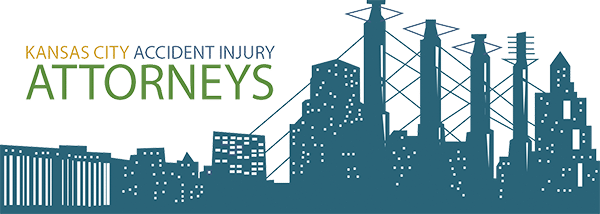Spine and Neck Injuries From Car Accidents
 Car accidents can leave a person with lasting and traumatic physical and emotional effects. In addition to the potential financial instability that can result from a serious accident, injuries sustained in a collision can also have long-term consequences on one’s health and well-being. Of all the injuries resulting from car accidents, however, neck and spine injuries are among the most common and serious. These types of injuries can greatly affect a person’s daily life by causing pain, discomfort, and limited mobility that can make even simple tasks difficult to perform.
Car accidents can leave a person with lasting and traumatic physical and emotional effects. In addition to the potential financial instability that can result from a serious accident, injuries sustained in a collision can also have long-term consequences on one’s health and well-being. Of all the injuries resulting from car accidents, however, neck and spine injuries are among the most common and serious. These types of injuries can greatly affect a person’s daily life by causing pain, discomfort, and limited mobility that can make even simple tasks difficult to perform.
What makes neck and spine injuries particularly worrisome is that they can be challenging to diagnose and treat. From minor strains and sprains to more severe injuries such as herniated discs and spinal cord injuries, the severity of these injuries can vary greatly from person to person. Even minor injuries can cause discomfort and pain for weeks or months following the accident, while more severe injuries can result in long-term disability or paralysis. It’s crucial to recognize the symptoms of neck and spine injuries and understand available treatment options, as this can help those who have been injured in car accidents in seeking the necessary medical attention and legal representation they need.
What are some common spine and neck injuries?
Motor vehicle accidents can cause a range of neck and spinal injuries that vary in severity based on the force of impact and the occupant’s position during the collision. Following are some of the most common neck and spinal injuries that can result from car accidents.
- Cervical dislocation: This injury happens when the bones or ligaments in the neck are disrupted or displaced, causing severe pain and limited mobility.
- Facet joint syndrome: The facet joints in the spine allow for movement and flexibility. When injured in a car accident, they can cause chronic pain and stiffness in the neck.
- Herniated or bulging discs: The force of a collision can cause spinal discs to rupture or bulge, putting pressure on nearby nerves and causing pain, tingling, or numbness in the neck, shoulders, arms, or hands.
- Spinal cord injuries: Damage to the spinal cord, the bundle of nerves running down the center of the spine, can cause partial or complete paralysis, loss of sensation, or loss of bladder or bowel control.
- Spinal fractures: A severe impact can cause one or more of the spine’s bones to fracture, resulting in nerve damage, paralysis, or even death.
- Traumatic brain injury: While not technically a neck or spinal injury, TBI is a common result of car accidents. It happens when the brain is jostled or shaken inside the skull, leading to damage to delicate tissues and cells. Symptoms include headaches, dizziness, memory loss, mood changes, and difficulty concentrating.
- Whiplash: This injury occurs when the head is suddenly jerked forward and then snapped back, damaging the soft tissues in the neck. Symptoms include neck pain, stiffness, headaches, dizziness, and blurred vision.
It’s crucial to seek medical attention immediately following a motor vehicle accident, especially if you suspect a spinal injury. You may receive attention at the scene, but if not, visit the nearest emergency room as soon as possible, as many neck and spinal injuries can be life-threatening if left untreated.
What are treatments for spine and neck injuries?
The type and severity of spine and neck injuries determine the course of treatment. Following are common interventions and treatments.
- Immobilization: Preventing further injury and allowing the injured area to heal can be done through immobilization of the neck or spine using a neck brace or back brace.
- Pain medication: Non-prescription pain relievers like acetaminophen and ibuprofen can lessen pain and inflammation in the neck and spine. Sometimes prescription pain medication may be necessary.
- Physical therapy: This involves exercises and stretches to enhance range of motion, strength, and flexibility in the neck and spine. It’s effective in treating various neck and spine injuries such as strains, sprains, and herniated discs.
- Steroid injections: Corticosteroid injections are used to reduce inflammation and pain in the neck and spine. They are typically administered for herniated discs and spinal stenosis.
- Surgery: More severe injuries like spinal fractures or severely herniated discs may require surgical intervention to repair or stabilize the neck or spine.
- Alternative therapies: Chiropractic care, massage therapy, or acupuncture are alternative therapies that some people may find relief from for neck and spine injuries. It’s essential to seek medical attention for any neck or spine injury to determine the best treatment course.
What if my injuries are long-term or permanent?
Some patients, even with all these therapies available, may never heal from their injuries and live with chronic pain every day. They may suffer from loss of mobility or function and require assistance with everyday tasks and may be unable to work. If this has happened to you or a loved one, it’s crucial you seek compensation with the assistance of a skilled and experienced lawyer from Kansas City Accident Injury Attorneys.
Our record speaks for itself, including several notable results for neck and back injury victims:
- Low Impact Collision – Herniated Disc / Cervical Fusion Surgery / Kansas Tort Claims Act / Resolution For Six Times The “Final” Offer
- Neck Injury / Post-Traumatic Stress Disorder – Substantial Resolution In Case Rejected By Other Attorneys
We will fight for the compensation to which you’re entitled for your damages, losses, and pain and suffering, protecting your rights and keeping you informed every step of the way. To schedule a consultation with a member of the Kansas City Accident Injury Attorneys team, call our offices or fill out our contact form today. We serve clients from offices in Kansas City, Lee’s Summit, St. Joseph and Parkville, MO, as well as Overland Park, Kansas City and Olathe, KS.
Related:
- Yes, You Should See a Doctor After Your Car Accident
- What Should I Do at the Scene of a Car Accident?

Kansas City personal injury attorney James Roswold of Kansas City Accident Injury Attorneys handles cases dealing with victims of personal injury, medical negligence, wrongful death, workers compensation, nursing home negligence, premises liability, product liability, car accident, truck accident and motorcycle accident cases.

